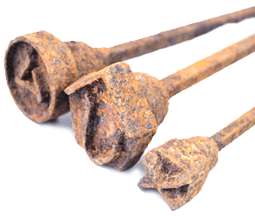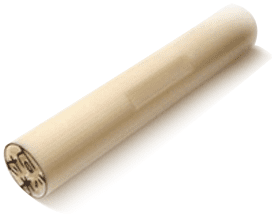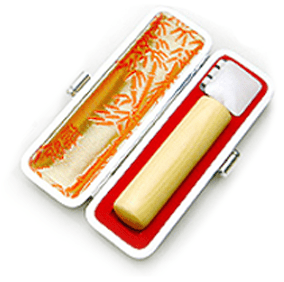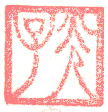This website is made possible by readers. I may earn a small commission when you buy through the links in this article at no extra cost to you. Learn more.
Since the 57AD, the Japanese have been using hanko or inkten, at first as a symbol of the Emperor's authority, but soon after, as the personal seal of noblemen which is almost like a Japanese version of the western signature. The samurais too, soon adopted the seal with an exclusive use of red ink. It was in 1870, that the hanko became modernized and widely adopted as the standard practice for approving documents in the Japanese society.
Types of Hanko
With hankos so widely used in Japan, the Japanese started having different hankos for different purposes in order to differentiate the offiiciality of the seals. Some types have specifications to adhere by in order to qualify, while others are just for fun. The more important hankos are usually kept in a more secure location to prevent forgery.

Mitome-in Personal name seal

Size
It is usually the size of an American penny or smaller. A male's is usually slightly larger than a female's, and a junior employee's is always smaller than his bosses' and his senior co-workers', in keeping with office social hierarchy.
Shape
Often round or oval, but square and rectangles are not unheard of.
Material
Plastic ones in popular Japanese names can be obtained from stationery stores for less than US$1, but ones carved into inexpensive stones are common too.
Common Uses
Signing postal deliveries, utility bills, internal company memos and other low-security everyday functions.
Ginko-in Bank seal

Size
Rules for the size and design vary somewhat from bank to bank.
Make
Usually custom made by professionals in wood or stone, a moderate amount of security is required, which is why they are also carefully hidden with their thumb shaped cases in their owner’s home.
Stamp pads or ink paste, in addition to dry cleansing tissues, are usually provided by banks.
Jitsu-in Officially registered seal
In order to be called a Jitsu-in, the seal has to be registered at your local municpal’s office and given a “certificate of seal impression” (inkan tōroku shōmei-sho).
This used to be an ad.
But no one likes ads, so I got rid of them. If my articles helped you, I ask for your support so I can continue to provide unbiased reviews and recommendations. Every cent donated through Patreon will go into improving the quality of this site.
Common Uses
Purchasing a vehicle, marrying, purchasing land, and other significant business transaction.
Material
The material is usually a high quality hard stone, and far less frequently deer horn, soapstone, or jade.
It’s to be kept in a very secure place such as a bank vault or hidden carefully in one’s home. Paste stored separately
Size & Shape
The size, shape, material, decoration, and lettering style of jitsuin are closely regulated by law of different parts of Japan. The rules surrounding a Jitsu-in are so stringent that going to a professional is key to getting it right.
Gago-in Leisure seal

Specifications
Being a hanko used for decorative purposes, a gago in can be any size, design, or shape. Irregular naturally occurring outlines and handles, as though a river stone were cut in two, are commonplace. The material may be anything, though in modern times soft stone is the most common and metal is rare
Daihyousha-in Corporate seal
Like the company stamps in Singapore, the Daihyousha-in is a corporate version of a person’s Jitsu-in. Like a person’s Jitsu-in, the seal is treated like a highly valuable asset of the company and stored with utmost security and safety.
Yamamoto Inten
While most places, even Tokyu Hands, offer quick and affordable hanko services, Yamamoto Inten belongs to a whole different league of hanko makers. Only using tsuge-wood, the master, Tousen Yamamoto of the famous hanko shop in Setagaya, Tokyo creates a hanko set (Mitome-in, Ginko-in and Jitsu-in) based on a person’s birthday, personality, feeling and other factors. You have to make a reservation before you come down and the process takes a whopping 2-3 months after the appointment. But rumors of increased fortune after getting a seal at Yamamoto Inten cause customers to flock here. Come here only if you are looking for works of art. Appointments for the next day are only accepted via phone from 12 pm onwards, and I tried unsuccessfully for 2 weeks straight trying to get an appointment. This shows how famous this shop is. Visit website (Japanese only)
Read about my experience getting a hanko from Yamamoto Inten here.
I designed a thing.

I found a 100 year old company that would create these heirloom quality canisters for me. They are handmade and will keep your tea leaves, coffee beans or anything that you need dry for years to come.
or read review